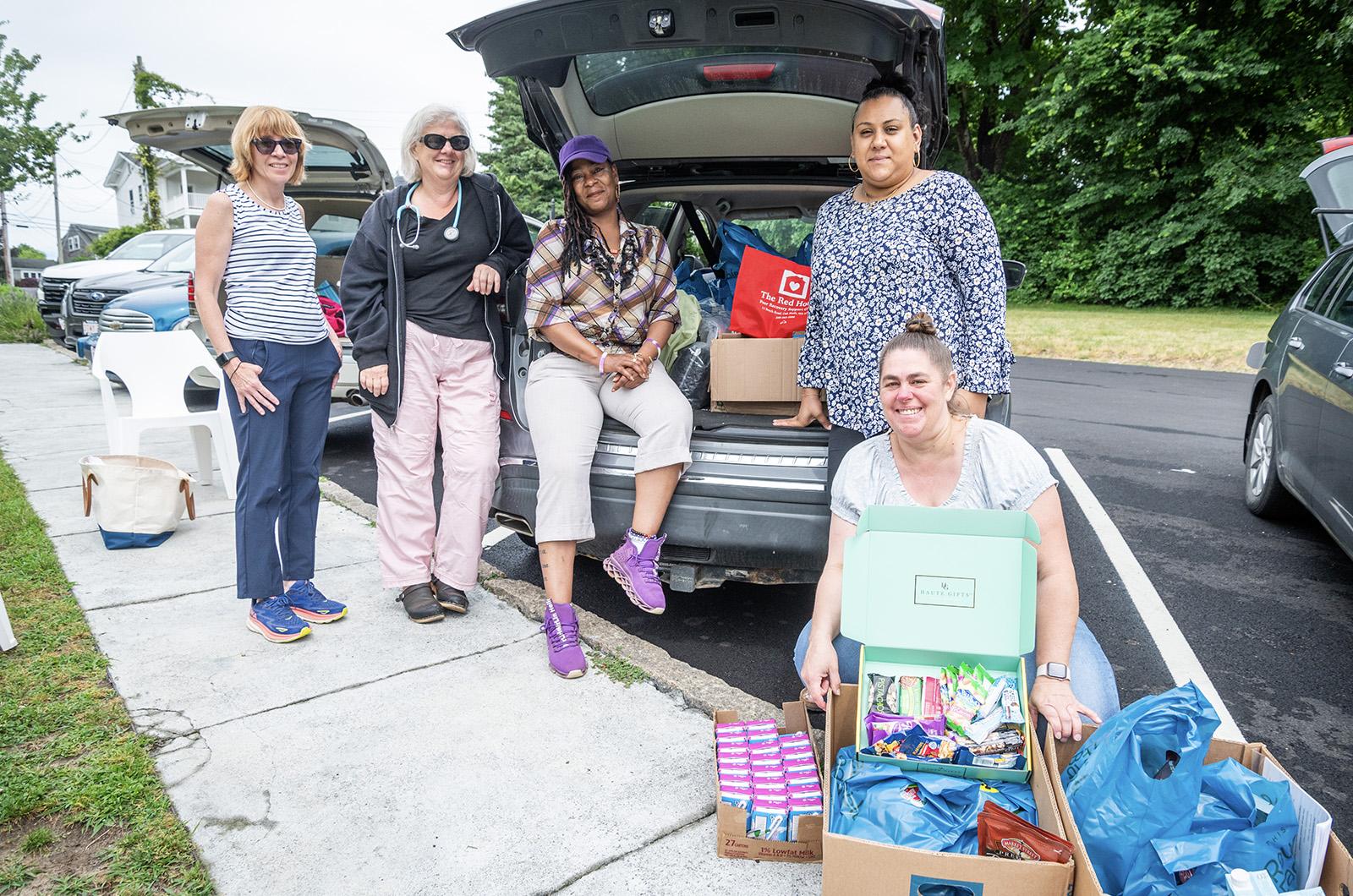The Island homelessness relief group Harbor Homes has begun a new summer outreach program that aims to offer food, medicine, counseling services and more to the Island’s high seasonal homeless population.
Sharon Brown, the director of homeless services at Harbor Homes, began the new program in May in response to rising levels of homelessness on the Vineyard and the struggles to access clients in the high season.
In the winter, Ms. Brown can ensure that people get the care they need because they are staying at the seasonal winter shelter on the Martha’s Vineyard Community Services campus.
But the shelter closes annually in the spring, making it hard to help the homeless population that scatters across the Island.
“You have to work with the person more than just a couple of months in order to actually make the case management effective,” Ms. Brown said. “Trying to keep up with [clients] during the summertime, when our shelter’s closed, proves to be really difficult.”
So Ms. Brown asked the community groups she worked with during the winter if they would join her on brief trips across the Island, where they could address the immediate needs of those currently facing homelessness and continue to check in with winter shelter guests.
In urban relief efforts, similar programming is often known as “street outreach.”
Supplies brought by Ms. Brown and other county and community groups have included medicine, bandages, water, electrolyte kits, tick kits, fentanyl strips and even cell phones, as well as ready-made food and multiple bags of shelf-stable groceries from Island faith groups.
Dukes County public health nurse Amelia Hambrecht has accompanied Ms. Brown on each of this summer’s first trips. Summer outreach so far has been “hugely successful,” she said.
“I am able to see people that really need services that I wouldn’t see any other place at the moment because the winter shelter is closed,” Ms. Hambrecht said.
“[Ms. Hambrecht] comes out with me to make sure [that clients] take any medication, to make sure that they’re eating healthy, to make sure they’re up to date with their appointments, and that they don’t need any help with getting stuff from the pharmacy,” Ms. Brown said. “It’s been really great and really effective.”
Follow-up services are crucial to ensure proper care for those suffering from permanent or intermittent homelessness, Ms. Hambrecht stressed.
“Most homeless people don’t have a working phone all the time, because they don’t have a place to charge their phone. They don’t have an address for insurance. A lot of the services require the state to be able to follow up with them, and when you don’t have the ability to follow up, that mitigates the ability to have a lot of the services,” Ms. Hambrecht said. “It’s a vicious circle.”
Already this summer, Ms. Hambrecht has been able to address a series of life-threatening medical issues. She was able to secure medication for a client suffering from dozens of tick bites after spending multiple days in the state forest, and she provided care for a man discharged from the hospital but refused to eat and take medication.
Homelessness is an endemic and growing issue on the Island. This winter, the Harbor Homes seasonal shelter repeatedly reached its nightly capacity of 20 guests, a first for the group. Over the course of the season, it provided shelter to 54 different individuals, another first.
As Good Parish food pantry volunteer Sarah Steigelman explained, there isn’t “just one definition” of homelessness on the Island. Having insufficient or inadequate shelter, such as living in a shed or overcrowded home, qualify as homelessness.
Seasonal instability in the housing market can precipitate periods of summer couch surfing or living out of a car. These are also forms of homelessness, Ms. Steigelman said, which produce many of the same barriers to nutrition and medicine.
“As a single mom with kids, it’s hard to keep a roof over your head during the summer, because the rents almost double from the winter rents,” Ms. Steigelman said. “Year-round, housing is next to impossible here.”
The joint pressure of the winter shelter closure and rising summer rents have meant the summer outreach program has additional urgency.
At the closing of the winter shelter in April, shelter director Lisa Belcastro said that a lack of affordable housing was the number one cause of homelessness on the Island.
“This season has certainly proven that homelessness is not about mental health issues or family problems or addiction,” Ms. Belcastro said at the time. “I’ve got so many workers living in the shelter who have jobs on-Island who can’t afford to live here. And it’s not their fault. We need to have affordable housing.”
Ms. Hambrecht echoed Ms. Belcastro.
“Many of the people who live in the shelter have jobs. Many of the people that are homeless [in the summer] have jobs. It just doesn’t make enough money to support the rent on this Island,” Ms. Hambrecht said.
Ms. Hambrecht, Ms. Brown and others with Harbor Homes worked this winter to compile “point-in-time count” data on Dukes and Barnstable counties homelessness, the most authoritative local homelessness data available, Ms. Brown said.
The point-in-time count data for 2024 was recently released, although it does not distinguish between Dukes and Barnstable counties’ “sheltered” homeless population. For both counties, the combined the number rose from 295 in 2023 to 397 in 2024.






Comments
Comment policy »